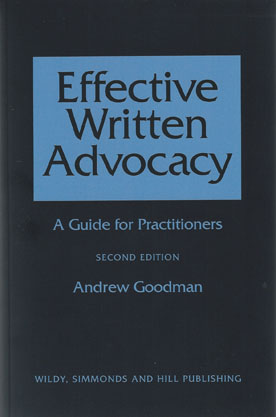
Is it possible to win your case before arriving at court? The author, a practising barrister for over thirty years, believes a highly focused approach to your written advocacy – correspondence, written negotiation, Part 36 offers and skeleton arguments, written opening notes for trial, closing submissions and costs submissions – will put you in the best possible position to do just that.
The importance of oral advocacy in deciding cases is not in dispute, but increasingly judges form pre-trial opinions of the likely outcome from written material, notably the skeleton or opening note. The application, trial or appeal then becomes a process to measure the judge’s pre-formed view. The effective written closing submission will become part of the judgment.
This book not only offers a practical and comprehensive guide to effective written advocacy, but provides worked examples drawn from real cases contributed from leading advocates such as Mrs Justice Carr, David Etherington QC, Lord Faulks QC, Andrew Hochhauser QC, Richard Lissack QC , Lord Pannick QC, and Lord Sumption.
Of particular interest to both practitioners and students of litigation practice, the second edition offers 17 new examples together with a discussion on written advocacy in family and criminal cases.
Invaluable to the practising lawyer, this book will also be compelling reading for anyone with an interest in using the legal process.
"Goodman has produced a first-class practical guide to modern written advocacy. The beauty of Goodman's new edition lies with the working examples from leading current advocates so we know what it is that the judges want. Effective Written Advocacy is an advocates's bible both invaluable and compelling...should be compulsory reading for all law students" Phillip Taylor, Richmond Green Chambers